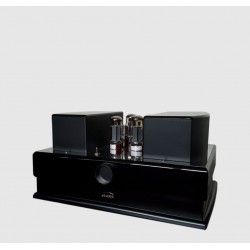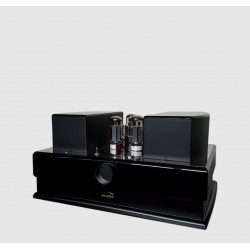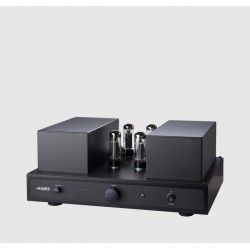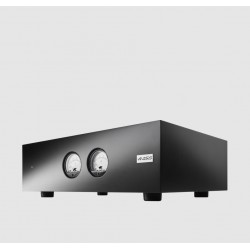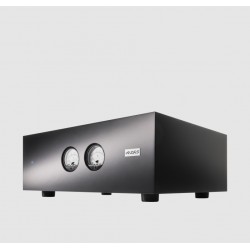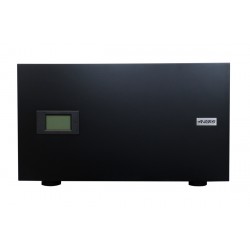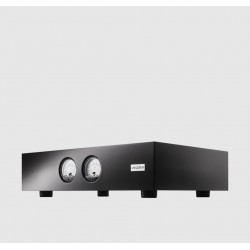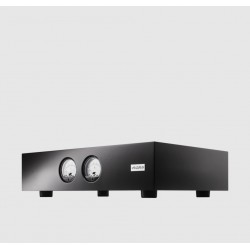






-
Конденсаторы
- Mundorf ECap
- Mundorf MCap
- Mundorf MCap RXF
- Mundorf MCap ZN
- Mundorf MCap SUPREME
- Mundorf MEAI
- Mundorf MEAIO
- Mundorf MESGO
- Mundorf MCap SUPREME silver/oil
- Mundorf MCap SUPREME silver/gold
- Mundorf MCap SUPREME silver/gold/oil
- Mundorf TubeCap
- Mundorf MLytic HV
- Mundorf MLytic AG
- Mundorf MLytyc HC
- Auricap XO
- Jantzen Audio MKT Cap
- Jantzen Audio Cross Cap
- Jantzen Audio Standard Z-Cap
- Jantzen Audio Superior Z-Cap
- Jantzen Audio Silver Z-Cap
- Jantzen Audio Copper Foil Amber Z-Cap
- Jantzen Audio Alumen Z-Cap
- Jantzen Audio SilverGold Z-cap
- Бумажно-масляные Rike Audio S-cap
- Mundorf Mlytic HC+ (4-pole)
- Mundorf MLytiv HV+ (4-Pin High Voltage Power Cap)
- Mundorf MCap SUPREME EVO
- Mundorf MCap SUPREME EVO Oil
- Mundorf MCap SUPREME EVO SilverGold
- Mundorf MCap SUPREME EVO SilverGold Oil
- Mundorf MLytic AG+
- RIKE Audio Q-Cap Copper Oil Polypropylen Capacitors
- RIKE Audio Oil-Paper-Capacitors - S-Cap 2
- Rike Audio Q-CAP2 PIO Copper Paper Oil capacitors
- Miflex Audio Capacitors
-
Катушки индуктивности
- Mundorf M-Coil
- Mundorf M-Coil BV
- Mundorf M-Coil VL
- Mundorf MCoil VNCU ZeroOhm (resin-soaked)
- Mundorf M-Coil LL Hepta Strand
- Mundorf M-Coil CF
- Mundorf M-Coil transformer-core
- Mundorf M-Coil CF transformer-core
- Mundorf M-Coil BV transformer-core
- MCoil VT transformer-core vacuum impregnated
- Mundorf M-Coil CF i-core
- Mundorf M-Coil BV i-core
- Mundorf M-Coil drum-core
- Mundorf M-Coil drum-core BV
- Mundorf M-Coil pin-core
- Mundorf M-Coil rod-core
- Mundorf M-Coil BV rod-core
- Mundorf M-Coil CF rod-core
- Mundorf M-Coil zero-ohm
- Mundorf M-Coil CF silver
- Mundorf M-Coil silver/gold
-
Jantzen Air Cored Wire Coil
- Jantzen 13AWG 1,8mm Air Core Coils
- Jantzen 14AWG 1,6mm Air Core Coils
- Jantzen 15AWG 1,4mm Air Core Coils
- Jantzen 17AWG 1,2mm Air Core Coils
- Jantzen 18AWG 1,0mm Air Core Coils
- Jantzen 20AWG 0,8mm Air Core Coils
- Jantzen 21AWG 0,7mm Air Core Coils
- Jantzen 22AWG 0,63mm Air Core Coils
- Jantzen 24AWG 0,5mm Air Core Coils
- Jantzen 26AWG 0,4mm Air Core Coils
- Jantzen 29AWG 0,3mm Air Core Coils
- Катушки Jantzen Wax Coil
-
Jantzen Iron Cored Coils With Discs
- Jantzen 13AWG 1,8mm Iron Cored Coils with Discs
- Jantzen 14AWG 1,6mm Iron Cored Coils with Discs
- Jantzen 15AWG 1,4mm Iron Cored Coils with Discs
- Jantzen 17AWG 1,2mm Iron Cored Coils with Discs
- Jantzen 18AWG 1mm Iron Cored Coils with Discs
- Jantzen 20AWG 0,8mm Iron Cored Coils with Discs
- Jantzen 21AWG 0,7mm Iron Cored Coils with Discs
- Jantzen 22AWG 0,63mm Iron Cored Coils with Discs
- Jantzen 24AWG 0,5mm Iron Cored Coils with Discs
- Jantzen 26AWG 0,4mm Iron Cored Coils with Discs
- Jantzen 29AWG 0,3mm Iron Cored Coils with Discs
- Jantzen C-Coil - Toroidal Core
- Катушки Jantzen Audio Cross Coil
-
Jantzen Audio Iron Coil
- Jantzen Audio Iron Coil 13AWG
- Jantzen Audio Iron Coil 14AWG
- Jantzen Audio Iron Coil 15AWG
- Jantzen Audio Iron Coil 17AWG
- Jantzen Audio Iron Coil 18AWG
- Jantzen Audio Iron Coil 20AWG
- Jantzen Audio Iron Coil 21AWG
- Jantzen Audio Iron Coil 22AWG
- Jantzen Audio Iron Coil 24AWG
- Jantzen Audio Iron Coil 26AWG
- Jantzen Audio Iron Coil 29AWG
- Jantzen Audio Litz Wire Wax Coil
- Mundorf MCoil VLCU
- Mundorf MCoil VSCU
- Mundorf MCoil VS iCore (resin-soaked)
-
Динамики
- Динамики ВЧ
- Среднечастотные динамики
- Динамки широкополосные
- Coaxial Drivers
- СЧ-НЧ Динамики
- НЧ Динамики
- Passive Radiators
- Subwoofers
- Car Audio drivers
- Scan-Speak Discovery
- Scan-Speak Classic
- Scan-Speak Revelator
- Scan-Speak Illuminator
- Seas Prestige
- Seas Excel
- Seas Exotic
- Seas Lotus
- Design by SEAS
- SB Acoustics
- SB Acoustics Tweeters
- SB Acoustics Midrange
- SB Acoustics Midwoofer
- SB Acoustics Woofers
- SB Acoustics Passive radiators
- SB Acoustics Subwoofer
- SB Acoustics Satori
- Accuton
- Audiotechnology
- Динамики ВЧ Mundorf Hi-Fi AMT U Series"
- Speaker driver accessories
- Monitor Audio
- DIY киты и Апгрейды
- Акустические системы
-
Hi-Fi and Hi-End equipment
- Mediaplayers
- Amplifiers
- Vinyl Players
- Earthequake Sound Home Audio
- Earthequake Sound Car Audio
- Earthequake Sound Gaming Audio
- Earthequake Sound Pro Audio
- Sonnet digital audio
- Power conditioners and distributers
- Акустические системы
- Streamers
- Portable headphone amplifiers
- Fuses and fuse holders
- Headphone Amplifiers
- DACs
- CD/SACD-players
- Accessories
Список товаров бренда Audes
Audes - manufacturer of high-end speakers, tube amplifiers and power conditioners.
In 1935 a group of enthusiats decided to establish production of radio receivers in Estonia. Beccery shipyard, which was practically inactive at that time, rented its building located at Kopli 80 (today Marati 4). A manufacturing plant of radio receivers was opened in Tallinn, Estonia. At the time, the factory was called RET (Raadio-Elektrotehnika Tehas).
In 1938–39 the sales number increased to approximately 4500 units, and 200–220 people worked at RET. The best European and American components from such brands, as Marconi and Philips, were used in radio receivers. By December 1938 10000 radio products were manufactured by the factory overall.From 1955 the factory started releasing radio-gramophones: a radio receiver combined together with a gramophone. From this moment all RET consumer radio equipment was released under Estonia trademark. The first radio-gramophone model Estonia 55 (later simply Estonia) was available until 1959. It used 12 bantam tubes, selenium bridge rectifier, push buttons for band selection, 2-speed (33 and 78 RPM) gramophone with a piezoelectric ceramic cartridge and two sapphire styli. USW reception capability was added to the radio receiver, while the SW band was separated into five subbands. The loudspeaker system included two 6ГДР-1 (6GDR-1) drivers located in the front wall and two additional 1ГД-9 (1GD-9) tweeters located on the side walls of the cabinet. In that time radio-gramophone was comparable to European products of a similar level in terms of sound quality. Overall 40212 units were released.
Radio-gramophone Estonia 2 was produced between 1958 and 1962. Overall 63861 units were released. The difference from the previous model was that the tweeters were placed in two separate cabinets. Provided their placement in a room was correct it became possible to achieve a considerably more pleasant sound in comparison with Estonia 55.
Radio-gramophone Estonia 3M was in production from 1964 to 1966. Overall 59224 units were released. It was a modification of Estonia 3 in a compact cabinet. The loudspeaker system is comprised of two 4ГД-7 (4GD-7) drivers. The use of separate high-frequency output transformers was abolished. Push button tone control was employed with options for ‘Voice’, ‘Solo’, ‘Symphony’, ‘Jazz’ and ‘Bass’.
Stereophonic period for RET began in 1969, when Estonia Stereo was released. The modular stereophonic tube radio-gramophone was produced from 1969 to 1973. Overall 34474 units were manufactured. The main module included seventeen radio tubes. The gramophone worked at four speeds and employed a piezoelectric ceramic stereo cartridge. The system included a three-way floorstanding loudspeaker pair. The radio-gramophone was equipped with push button switches, manual and motorised station tuner, automatic reception frequency fine tuning and a handle for manual steering of a loop antenna.
Modular stereophonic radio-gramophone Estonia 006 was produced from 1972 to 1978. Overall 94875 units were manufactured. Reception module was similar to Estonia Stereo, however the power amplifier was based entirely on transistors. Motorised fine-tuning of the frequency was substituted by electronic. The radio-gramophone included small-sized bookshelf loudspeakers 10МАС-1 (10MAS-1).
In 1985 production of loudspeaker drivers and assembly of loudspeaker systems was moved from the main Tallinn factory to the Jõhvi branch. At the same time many technological processes were modernised in partnership with Genelec Oy, Finland.
Modular stereophonic radio-gramophone Estonia 010 was a copy of Sharp Optonic. It was produced from 1985 to 1992. Both selling of a complete set, as well as in separate modules was intended. At first the set included active loudspeakers, however production of a power amplification module and 35 АС-021 (35 AS-021) loudspeakers was started in 1985.
Loudspeakers Estonia 35 AC-021 (35 AS-021) were three-way systems with a honeycomb woofer, a dome midrange and a dome tweeter. They were produced from 1985 to 1990. Overall 73398 units were released. Estonia 35 AC 021-1 (35 AS 021-1) was available as well. It lacked protective grids over the midrange and the tweeter. The drivers had round flanges.
In 1992 Estonia was rebranded as Audes (‘Audio from Estonia’).
Current product range for consumers include high-end speakers, tube amplifiers and power conditioners.
Товаров: 10.

